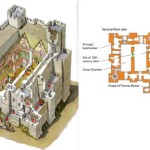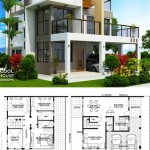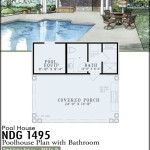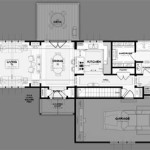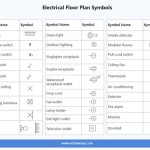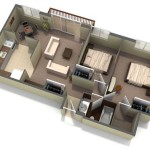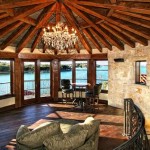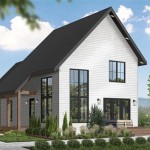Adobe Style House Plans With Courtyard: A Synthesis of Tradition and Modern Living
Adobe style architecture, characterized by its earthen construction, smooth stucco walls, and flat or gently sloping roofs, evokes a sense of warmth, history, and connection to the land. When integrated with a courtyard design, adobe style homes create private oases that seamlessly blend indoor and outdoor living. This article explores the key characteristics of adobe style house plans with courtyards, examining the design principles, benefits, and practical considerations that contribute to their enduring appeal.
The allure of adobe style homes extends beyond their aesthetic qualities. The thick adobe walls provide excellent thermal mass, helping to regulate indoor temperatures and reduce energy consumption. During the day, the walls absorb heat from the sun, slowly releasing it during the cooler evening hours. This natural insulation makes adobe homes exceptionally comfortable in both hot and cold climates. Incorporating a courtyard into the design further enhances this effect by creating a sheltered microclimate that can be enjoyed year-round.
Courtyards, in general, offer a variety of benefits, regardless of architectural style. They provide a protected outdoor space for relaxation, entertainment, and gardening. They can also improve natural light and ventilation in the home, and they can create a sense of privacy and seclusion. In the context of adobe style architecture, courtyards become a natural extension of the living space, offering a sanctuary that complements the earthy tones and organic forms of the building.
Design Principles of Adobe Style House Plans with Courtyard
Designing an adobe style house plan with a courtyard requires careful consideration of several key principles. These principles relate to the layout, materials, orientation, and overall aesthetic of the home. Understanding these principles is essential for creating a cohesive and functional design that captures the essence of adobe architecture.
One of the primary considerations is the layout of the house. Adobe style homes often feature a U-shaped or L-shaped layout, with the courtyard forming the central space. This layout allows for easy access to the courtyard from multiple rooms in the house, creating a seamless flow between indoor and outdoor living. The placement of windows and doors is also crucial to maximizing natural light and ventilation while maintaining privacy.
The choice of materials is another important factor. Adobe bricks, or their modern equivalents such as stabilized adobe or pumice-crete, are the defining material of adobe style architecture. These materials are typically locally sourced and have a natural, earthy appearance. Other common materials include wood for roof beams and doors, and clay tiles for flooring and roofing. The overall aesthetic should be simple and unadorned, with an emphasis on natural textures and colors.
Orientation also plays a significant role in the design of adobe style homes. In hot climates, it is important to orient the house to minimize exposure to the sun during the hottest hours of the day. This can be achieved by orienting the courtyard to the east or west, or by incorporating overhangs and pergolas to provide shade. In colder climates, orienting the house to the south can maximize solar gain and reduce heating costs. The placement of the courtyard should also consider prevailing winds to optimize natural ventilation.
The courtyard itself should be designed as an extension of the living space. This can be achieved by incorporating comfortable seating areas, outdoor dining spaces, and features such as fountains or fireplaces. Landscaping is also an important element, with drought-tolerant plants and native vegetation often used to create a natural and sustainable environment. The courtyard should be a tranquil and inviting space that complements the architecture of the house.
Benefits of Integrating a Courtyard into Adobe Style Homes
The integration of a courtyard into adobe style house plans offers a multitude of benefits, ranging from enhanced energy efficiency to improved quality of life. These benefits contribute to the enduring popularity of this architectural style and its continued relevance in contemporary housing design.
Energy efficiency is a major advantage of adobe style homes with courtyards. The thick adobe walls provide excellent thermal mass, helping to regulate indoor temperatures and reduce the need for artificial heating and cooling. The courtyard further enhances this effect by creating a sheltered microclimate that can be enjoyed year-round. In the summer, the courtyard provides shade and ventilation, keeping the house cool. In the winter, the enclosed space can trap solar heat, warming the house.
Improved natural light and ventilation are also significant benefits. The courtyard allows natural light to penetrate deep into the interior of the house, reducing the need for artificial lighting. The open design of the courtyard also promotes natural ventilation, allowing fresh air to circulate throughout the house. This can improve indoor air quality and create a more comfortable living environment.
Privacy and seclusion are other key advantages. The courtyard provides a private outdoor space that is shielded from the outside world. This can be particularly valuable in urban or suburban settings where privacy may be limited. The courtyard can also serve as a buffer between the house and the street, reducing noise and creating a more peaceful living environment.
Enhanced connection to nature is another important benefit. The courtyard allows residents to connect with the natural world in a meaningful way, even in a built environment. The presence of plants, water features, and outdoor seating areas can create a sense of tranquility and well-being. The courtyard can also provide opportunities for gardening and other outdoor activities.
Practical Considerations for Designing Adobe Style House Plans with Courtyard
While adobe style house plans with courtyards offer numerous benefits, there are also practical considerations that must be taken into account during the design process. These considerations relate to site selection, materials sourcing, construction techniques, and maintenance requirements.
Site selection is a crucial first step. The ideal site for an adobe style home with a courtyard should be relatively flat and well-drained. The soil should be suitable for building with adobe bricks, or for supporting alternative construction methods. The site should also have access to utilities such as water, electricity, and sewage. Consideration should be given to the orientation of the site to maximize solar gain and natural ventilation.
Materials sourcing is another important consideration. Adobe bricks are typically made from locally sourced materials such as clay, sand, and straw. It is important to ensure that these materials are of high quality and that they meet local building codes. If adobe bricks are not readily available, alternative materials such as stabilized adobe or pumice-crete can be used. It is also important to source sustainable and environmentally friendly materials whenever possible.
Construction techniques for adobe style homes can be more labor-intensive than those used for conventional construction. Adobe bricks are typically laid by hand, and the walls must be carefully constructed to ensure structural integrity. It is important to hire experienced contractors who are familiar with adobe construction techniques. Alternative construction methods such as rammed earth or straw bale construction can also be used, but these methods require specialized knowledge and expertise.
Maintenance requirements for adobe style homes are generally low, but there are a few specific considerations. The stucco walls should be inspected regularly for cracks and repaired as needed. The roof should also be inspected for leaks and repaired promptly. It is important to protect the adobe walls from excessive moisture, as this can cause them to deteriorate over time. Proper drainage is essential to prevent water from accumulating around the foundation of the house. Regular landscaping and maintenance of the courtyard are also important to ensure that it remains a beautiful and functional space.
Incorporating modern amenities into an adobe style home requires careful planning. While the charm of adobe architecture lies in its simplicity and rustic appeal, modern homeowners often desire features such as updated kitchens, bathrooms, and energy-efficient appliances. Striking a balance between tradition and modernity is key to creating a comfortable and functional living space that respects the architectural heritage of the adobe style.
Ultimately, designing an adobe style house plan with a courtyard is a challenging but rewarding endeavor. By carefully considering the design principles, benefits, and practical considerations outlined in this article, it is possible to create a home that is not only beautiful and functional but also sustainable and connected to the land.

Expansive Adobe Home Floor Plan Built Around An Open Courtyard House Plans Dream

Expansive Adobe Home Floor Plan Built Around An Open Courtyard House Plans One Story

Adobe Style Home With Courtyard Santa Fe Meets Traditional House Plans Designs

The Filderstadt Adobe Style Home Has 4 Bedrooms 3 Full Baths And 1 Half Bath See Amenities For Courtyard House Plans More Luxury

Plan 6793mg Adobe Style House With Icf Walls Plans Southwest

Adobe House Plans For A Small 1 Story Home With 3 Bedrooms

Adobe Style House Plans Floor

Adobe Southwestern Style House Plan 3 Beds 2 5 Baths 2024 Sq Ft 72 127 Plans Farmhouse

Contemporary Adobe House Plan 61custom Modern Plans

Plan 057h 0012 The House

